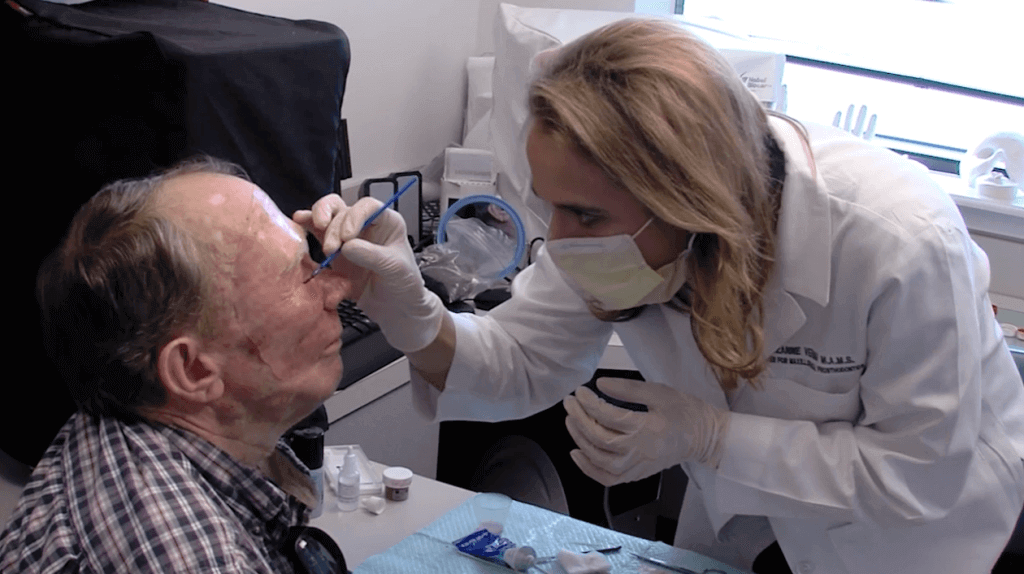After a rare fungal infection ate away at the soft tissue and eye of Billy Crawford in just 4 hours, doctors told him he had just days to live.
Against the odds, resilient Crawford pulled through and thanks to pioneering surgery with the help of virtual reality, doctors managed to restore the shape of his face.
61 year old Crawford, from Lockesburg, Arkansas, faced inconceivable difficulties over a 20 year period, including open heart surgery, bouts of cancer and a torrent of life-threatening infections. In 2010, after chemotherapy left his immune system severely damaged and white blood cell stores depleted, Crawford somehow inhaled fungal spores that are uncommonly found in soil. A rare infection took hold that would leave him scarred for life.
Mucormycosis is thought to only affect 2 people per million, but is very difficult to treat and is often fatal. Caused by fungus in the order Mucorales, it has been more prevalent in tsunami survivors, where rotting vegetation is commonly found in the surrounding environment.
What began as a small black mark on Crawford’s nose quickly developed in severe blisters and raw ulcers, a serious fever and a failing immune system. Although doctors quickly administered anti-fungal medication, the infection spread deep into the tissue of his cheeks, eating away at the bone, quickly destroying his facial features and blinding an eye.
Last week at an American science conference, prosthetics expert Dr Suzanne Verma described how she and colleagues at the Texas A&M University used a revolutionary imaging technique and combined it with silicon prosthesis design to restore the facial structure of Crawford.
By collecting CT imaging scans before and after mucormycosis, the team were able to merge the two using specialist software, creating a computer model of Crawford’s face. Exploring this model, much like exploring a map in virtual reality games, the doctors could pinpoint the areas of damage, design a prosthesis to fit the area and plan the surgery required for the mask to fit.
The use of clever technology didn’t stop there. During surgery, light-emitting diodes were laid across Crawford’s face to act as markers, to guide surgeons and help digitally track where exactly to implant a series of magnets in his forehead and cheeks. This method of navigational surgery helped make the procedure more accurate. Once healed, magnets could then precisely attach to a silicone prosthesis mask, which included wrinkles, eyelids and over 16 different colours applied to make more realistic skin. This improved Crawford’s quality of life drastically.
Before surgery, Crawford said, “I haven’t had a nose for so long, it will take me a little while to get used to it. But it’s going to be a great adjustment. This is the best Christmas gift I could ever receive. It’s perfect; a lot better than I ever imagined.”
Discussing navigational surgery, Verma said, “It’s GPS in the operating room. Just as we use satellite to find our position on a moving map while driving our car, we use cameras and tracking devices to help us find our place on an anatomical map while operating in real time on a patient.”
Unfortunately, after a difficult battle, Billy Crawford lost his life in April last year, but his legacy remains. “This has definitely been the most challenging and rewarding prosthetic restoration I have done in my career,” Verma said. “Mr. Crawford is an inspiration, and his positive attitude helped make his treatment a success.”


